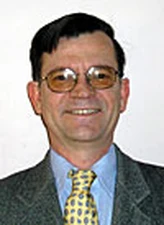Thomas Herring

The 2007 Vening Meinesz Medal is awarded to Thomas Herring for his outstanding contributions to the advancement of space geodetic techniques for geodynamic studies.
Professor Thomas A. Herring was born in 1955 in Cooroy/Queensland, Australia. He was educated at the University of Queensland, with a Bachelor and Master Degree in Surveying. He received his Ph.D. in 1983 from the Department of Earth, Atmospheric, and Planetary Sciences at the Massachusetts Institute of Technology (MIT). His scientific career has included positions at the University of Queensland and at Harvard University. He is currently a Professor of Geophysics at MIT.
Tom Herring’s career has been marked by leadership in the use of space-geodetic measurements to study the properties of the Earth. His first paper established the ability of very-long-baseline interferometry (VLBI) to measure inter continental baselines with centimeter precision. Five years later, he and his colleagues published the first conclusive evidence from VLBI of tectonic plate motions. The improved analysis of VLBI data also led to an empirical nutation model, which was used by the International Earth Rotation Service for sometime. He was the first to determine the Free Core Nutation resonance from VLBI observation of nutation and determined important core properties with unprecedented accuracy. In the early 90’s, Tom Herring continued his VLBI studies, but also began to make important contributions to the understanding of global and regional geodynamics using the global positioning system (GPS). He demonstrated that Earth rotation variations could be derived from GPS observations. He contributed significantly to the combination of geodetic techniques for the determination of the velocity field for Southern California, using time series of heterogeneous data sets from VLBI and GPS observation. By combining a critical understanding of the inherent deficiencies in space-geodetic measurements with a vision of their potential accuracy, Tom Herring has consistently pushed the analyses of space geodetic observations to higher levels.
He has edited an American Geophysical Union Monograph, has contributed articles to 6 books, and has published over 75 peer reviewed journal articles. Community respect for his leadership and scientific insight has led to his serving the geodetic community at very high levels. This includes serving on many National Research Council panels, serving on the National Academy of Sciences Geodynamics Committee, contributing to NASA’s Solid Earth Sciences working groups and review panels, serving on and chairing International Association of Geodesy (IAG) working groups, and serving on the Directing Board as well as Director of the University Navstar Consortium (UNAVCO) Inc..
His contributions to geodesy have been marked by numerous accolades, including the NASA Group Achievement Award for his work on the Crustal Dynamics Project (1986 and 1993), the American Geophysical Union’s, Macelwane Medal awarded for significant contributions to the geophysical sciences by an outstanding young scientist (1991), and the Bomford Prize given by the IAG at four years intervals to a young scientist for outstanding contributions to geodetic studies (1995).
